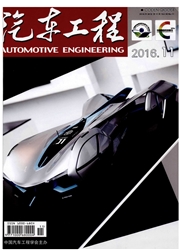

 中文摘要:
中文摘要:
以优化动力电池充放电控制策略为目标,主要采用实验方法开展了动力电池极化电压特性研究,分析了SOC、充放电倍率、充放电方式和环境温度等因素影响下极化电压的变化规律.结果表明当10%〈Bsoc〈80%时,极化电压变化比较平缓,可接受高倍率充放电电流;充电倍率越高,极化电压稳定区域越小,在容量两端的极化现象越明显;不同温度下,极化电压对电池可用容量的影响也不一致,温度越低,极化电压对可充入电量影响越明显;在低温条件下,极化电压出现明显的累积现象,其中锰酸锂电池尤为严重.
 英文摘要:
英文摘要:
In order to optimize the control strategy of the lithium ion battery, some experiments were carried out to get the laws of the variation of polarization voltage in the different SOC, the rate of charge and discharge, the method of charge and discharge and ambient temperatures. The results show that the polarization voltage varies smoothly and the battery can accept the high rate of charge and discharge as 10%〈Bsoc〈80% ; the higher the rate of charge is, the more obvious polarization phenomenon is in the low and high SOC and the stability region is smaller; the cumulative phenomenon of polarization voltages are not the same in different temperature, the lower the temperature is, the more obvious polarization voltage changes; the cumulative phenomenon of polarization voltage is obvious, especially for LiMn2 04.
 同期刊论文项目
同期刊论文项目
 同项目期刊论文
同项目期刊论文
 Electrochemical Characterization of Li4Ti5O12/C Anode Material Prepared by Starch-Sol-Assisted Rheol
Electrochemical Characterization of Li4Ti5O12/C Anode Material Prepared by Starch-Sol-Assisted Rheol Research on quantitative models of electric vehicle charging stations based on principle of energy e
Research on quantitative models of electric vehicle charging stations based on principle of energy e 期刊信息
期刊信息
